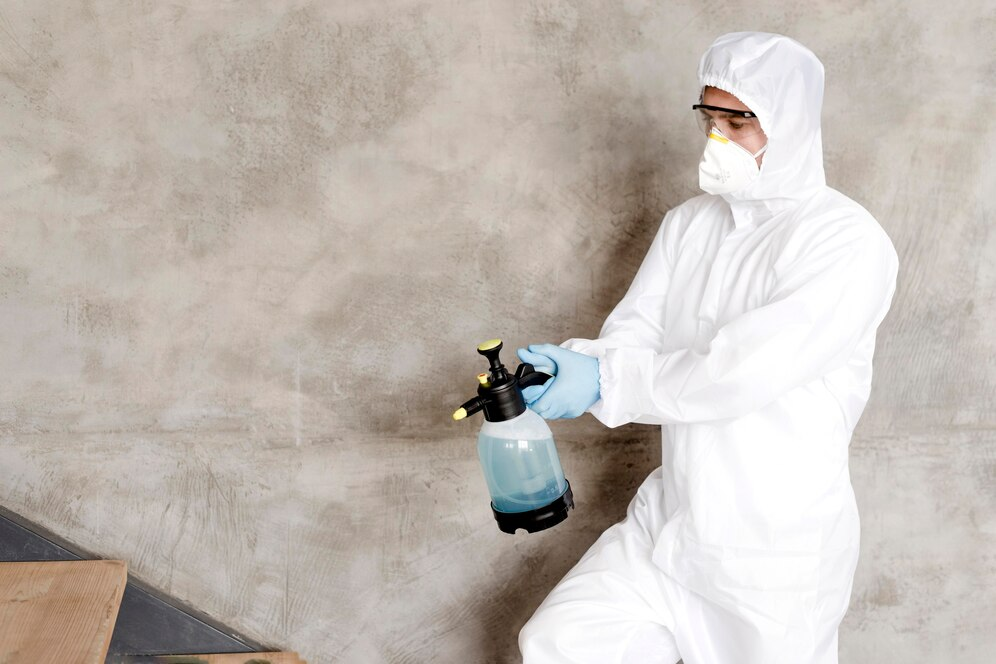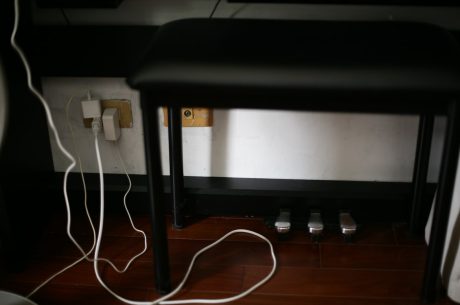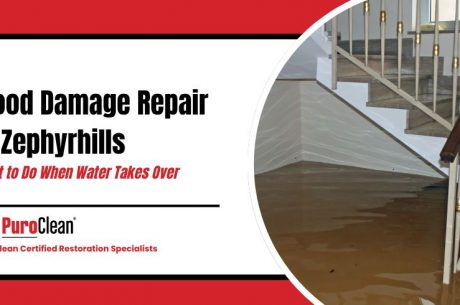
Image by GoodLifeStudio from Getty Images Signature on Canva
Mold and odor removal is essential for maintaining a healthy and comfortable living environment. Mold growth and unpleasant odors can significantly impact the air quality in your home, which leads to various health issues and a decrease in overall well-being. Whether you’re dealing with a damp basement, a musty attic, or a recent water damage incident, understanding effective mold and odor removal techniques is crucial.
Promptly addressing mold and odor problems can prevent long-term damage to your property and health. This blog will explore the common causes of mold and odor and provide eight of the best techniques for mold and odor removal to guide you on the path to a fresher, cleaner home.
Common Causes of Mold and Odors
Mold and unpleasant odors in your home can stem from various sources, often linked to excess moisture and poor ventilation. Identifying these common causes can help you address the root of the problem and prevent future occurrences. Here are some primary culprits:
- Water Damage: Leaking pipes, roof leaks, and flooding create a damp environment perfect for mold growth.
- Poor Ventilation: Areas with inadequate airflow, such as basements and attics, can trap moisture and lead to mold and odor problems.
- Condensation: Warm, moist air meeting cold surfaces can result in condensation, providing a perfect breeding ground for mold.
- Damp Materials: Carpets, upholstery, and wood exposed to moisture can develop mold and retain unpleasant odors.
- Pet Odors: Pets can introduce smells from their fur, accidents, and food, which can be difficult to remove if not promptly addressed.
- Smoke: Tobacco smoke and cooking odors can linger in fabrics and materials, contributing to persistent odors.
- Garbage: Accumulated trash and decomposing food can cause strong, unpleasant odors in your home.
- Sewage Problems: Plumbing issues or sewer backups can lead to significant odor and mold problems if not resolved quickly.
8 Best Techniques for Mold and Odor Removal
Understanding and employing effective techniques for mold and odor removal can make a significant difference in maintaining a healthy home environment. Here are the top eight techniques:
1. Identify and Fix Moisture Sources
The first step in effectively removing mold and odors is to eliminate moisture sources. Start by promptly repairing any leaks in pipes, roofs, or windows. Make sure that moisture-prone areas like bathrooms and kitchens are well-ventilated to prevent humidity buildup. The ideal humidity level in a home is below 60% in the summer and around 40% in the winter. Consider using dehumidifiers in basements and other damp spaces to help maintain these optimal humidity levels.
2. Clean and Disinfect
Thorough cleaning and disinfecting of affected areas are crucial for effective mold and odor removal. Use a mixture of water and detergent to clean mold-affected areas. For tougher mold, a solution of bleach and water can be used to disinfect the area. Ensure you wear protective gear such as gloves, masks, and goggles when handling mold to prevent exposure to harmful spores.
3. Use Mold-Resistant Products
Consider using mold-resistant paints, drywall, and insulation in moisture-prone areas such as bathrooms and basements. These products are specifically designed to prevent mold growth and can help avoid future problems. Regularly inspect these areas to guarantee the materials are in good condition and free from mold.
4. Activated Charcoal
Activated charcoal is an effective odor absorber. Place bowls of activated charcoal in areas with persistent odors, such as basements, closets, and bathrooms. The charcoal will absorb and neutralize odors over time, leaving your home smelling fresh. Replace the charcoal periodically to maintain its effectiveness.
5. Baking Soda
Baking soda is another natural odor absorber. Sprinkle baking soda on carpets, upholstery, and other affected areas, let it sit for a few hours, and then vacuum it up. This simple method can help remove musty and pet-related odors. Additionally, placing open boxes of baking soda in refrigerators, closets, and other confined spaces can help keep them odor-free.
6. White Vinegar
White vinegar is an effective odor neutralizer and mild disinfectant. Use vinegar to wipe down surfaces and spray in areas with unpleasant odors. You can also place bowls of vinegar in rooms with persistent odors to help neutralize them. The vinegar odor will fade after a few hours, taking unwanted odors with it.
7. Essential Oils
Essential oils like lavender oil have natural antimicrobial properties and can help mask unpleasant odors. Add a few drops to a spray bottle filled with water and use it as an air freshener. Alternatively, you can add these oils to your cleaning solutions to leave a pleasant scent while also disinfecting surfaces.
8. Professional Mold Remediation
For severe mold and odor issues, it’s best to seek professional help. Professional mold remediation services possess the knowledge and specialized equipment needed to effectively eliminate mold and tackle any underlying issues. They not only handle the removal process safely but also offer valuable insights on preventing future mold growth and enhancing your home’s air quality.
Frequently Asked Questions
How can I prevent mold and odor issues in my home?
To prevent mold and odor issues, keep your home dry and well-ventilated. Fix any leaks from pipes or roofs immediately, and use dehumidifiers in damp areas like basements. Regularly clean bathrooms and kitchens, and use exhaust fans to reduce moisture. Additionally, check for condensation on windows and walls, and consider using mold-resistant products.
Is it safe to remove mold by yourself?
While you might handle small areas of mold on your own, it’s always safer to call a professional, especially for larger infestations. Professionals have the right equipment and expertise to remove mold safely, which minimizes health risks associated with exposure. If you see extensive mold or have health concerns, it’s best to reach out to a professional for effective remediation.
Can I simply paint over the mold to hide it?
No, painting over mold is not a good idea. The mold will continue to grow underneath the paint, leading to more damage and potential health issues. It’s crucial to have a professional properly remove the mold first before painting to ensure that the underlying problem is completely addressed.
Conclusion
Effective mold and odor removal requires a combination of proper cleaning techniques, moisture control, and professional intervention. By understanding the common causes of mold and odors and implementing the best removal techniques, you can maintain a healthy and pleasant living environment.
If you encounter significant mold or odor problems, don’t hesitate to contact the experts at PuroClean Zephyrhills for reliable assistance and peace of mind. Call us now! Your home deserves to be fresh and inviting.





 PuroClean Certified Restoration Specialists
PuroClean Certified Restoration Specialists